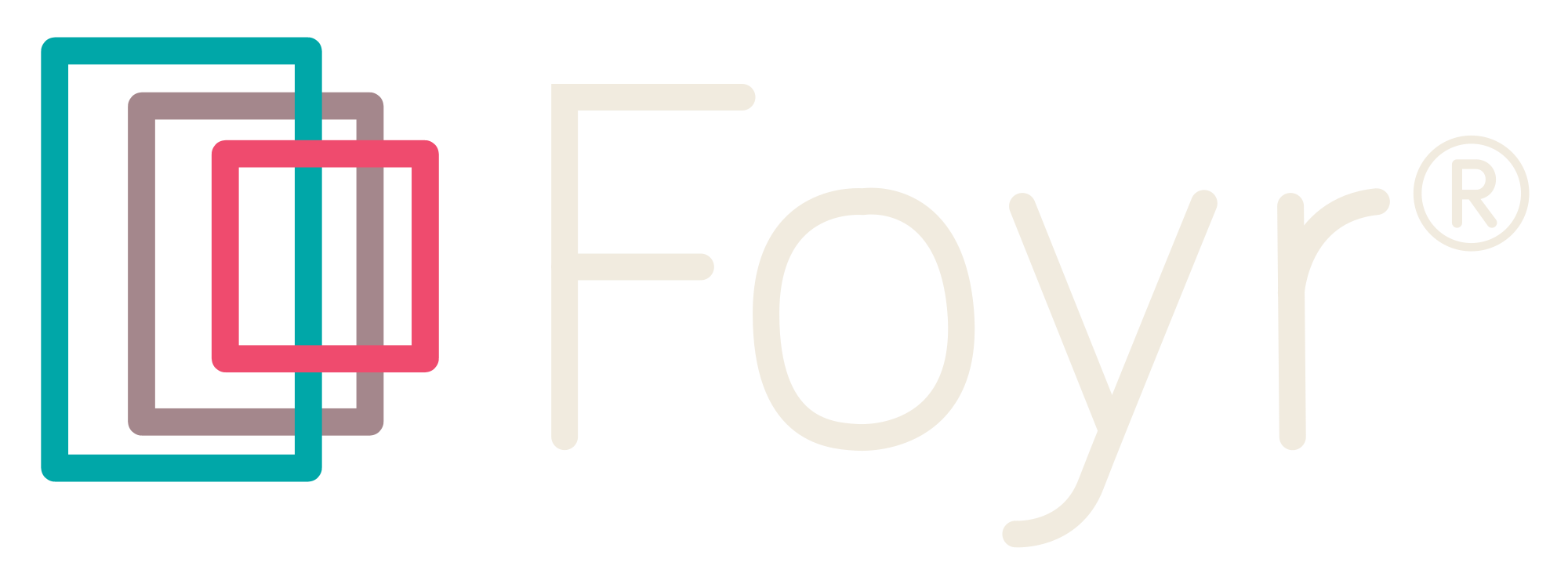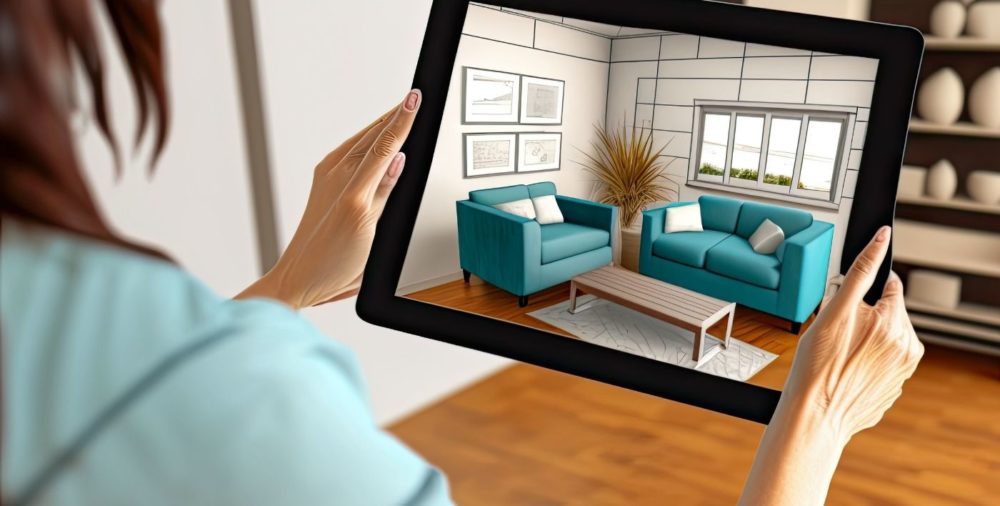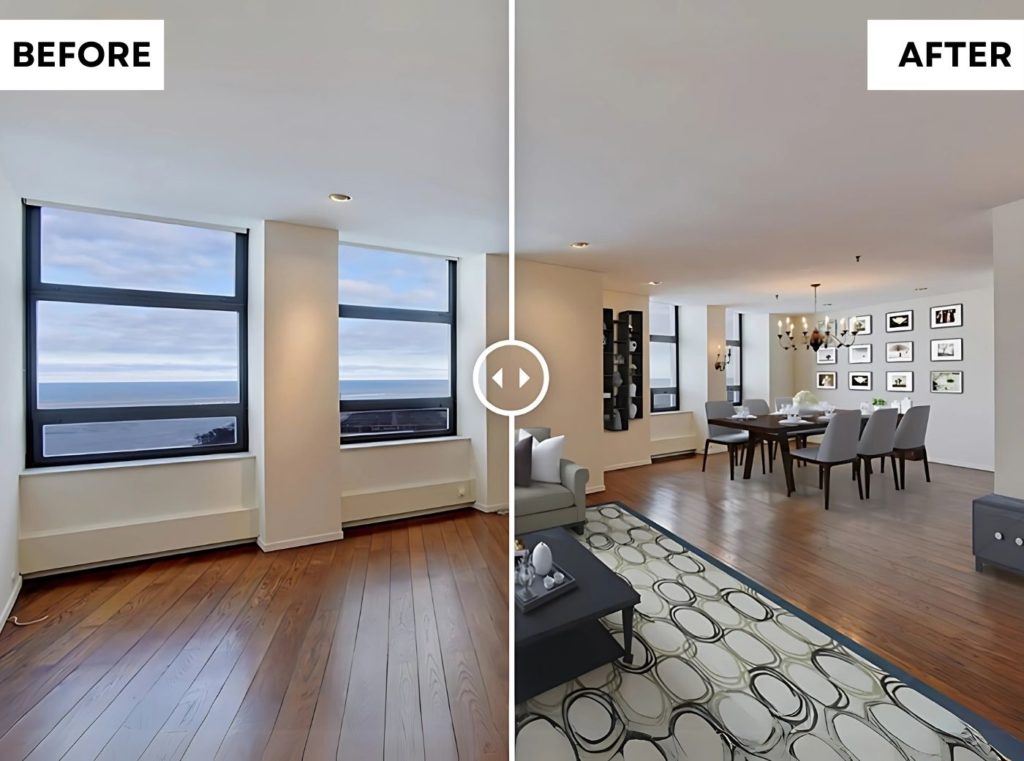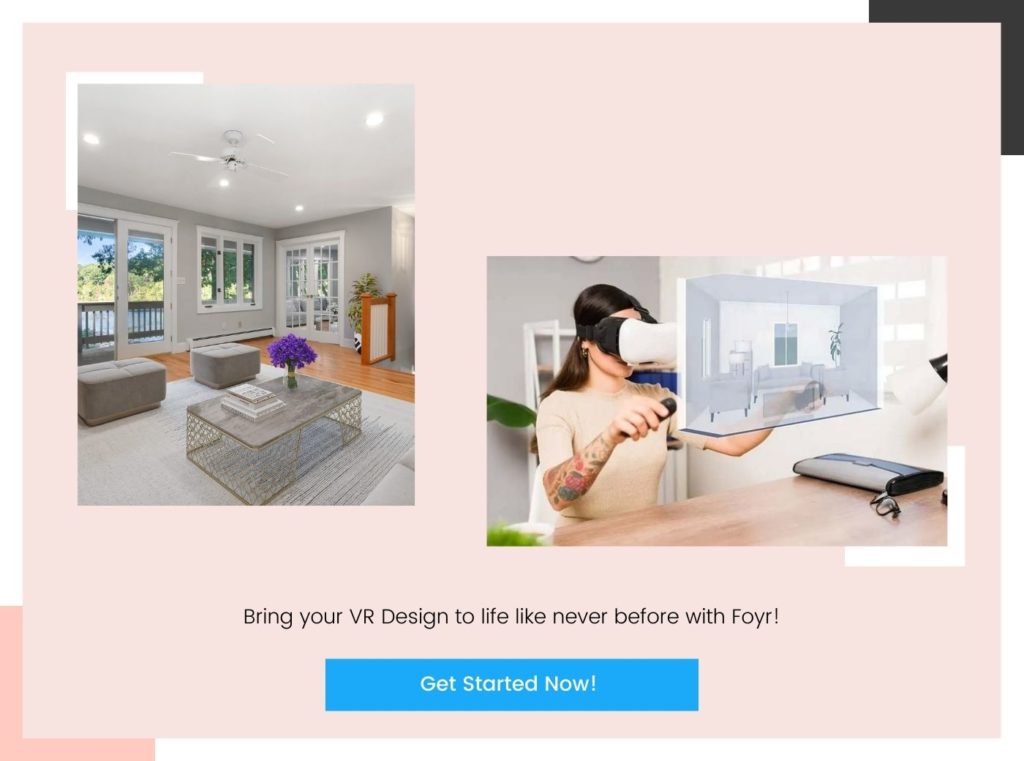Table of Contents
In today’s competitive real estate market, how a space is presented can mean the difference between a fast sale at a premium price—or months on the market. Traditionally, interior design has played a pivotal role in boosting property value. But in 2025, the rise of virtual interior design has taken this ROI potential even further.
Virtual interior design allows professionals to transform spaces digitally, offering cost-efficient, scalable solutions that resonate with modern buyers. With tools like Foyr Neo, designers can create immersive, photorealistic designs without ever stepping foot in a space—maximizing both visual impact and profitability.
What Is Virtual Interior Design?
Virtual interior design refers to remote design services where layouts, materials, and furnishings are planned and visualized using digital tools. Unlike traditional design, it:
- Eliminates the need for in-person visits
- Uses software for 2D/3D rendering, space planning, and virtual staging
- Offers faster turnaround and more flexible revisions
Modern software allows for real-time collaboration, scalable workflows, and market-aligned design strategies—all while lowering operational costs.
ROI of Interior Design: How Design Affects Property Value
Professional interior design is more than aesthetics—it’s a direct contributor to home equity. According to the National Association of Realtors:
- Staged homes sell for 6–10% more than unstaged ones
- Strategic upgrades like kitchen and bathroom updates yield 70–80% ROI
- Enhanced lighting and smart layouts increase perceived space and functionality
Virtual interior design amplifies this ROI by enabling designers to test multiple scenarios digitally—no demolition or expensive experiments required.
Benefits of Virtual Design for ROI
1. Faster Sales and Higher Offers
- Virtual staging helps buyers visualize potential, speeding up decision-making
- According to NAR, staging can increase listing price by 1–5%
- AR/VR walkthroughs reduce time on the market by offering immersive previews
2. Reduced Operational Costs
- No physical showroom or travel required
- Subscription-based design platforms eliminate high upfront software costs
- Cloud tools streamline team collaboration and client feedback
3. Maximized Design Efficiency
- Quick iterations allow for agile design tweaks
- Data analytics help tailor designs to local buyer preferences
- Fewer revisions = better margins and happier clients
High-ROI Design Strategies
Here’s how designers can maximize returns for clients through thoughtful upgrades:
|
Upgrade |
Avg. ROI |
Notes |
| Kitchen Remodel | 70–80% | Focus on layout, lighting, and appliances |
| Bathroom Refresh | 60–70% | Swap outdated fixtures and add storage |
| Lighting Overhaul | 60% | Natural light + warm-tone LEDs win buyers |
| Paint & Color Strategy | 50–60% | Neutral + accent walls = emotional appeal |
| Smart Home Integration | 5–10% price bump | Security, thermostats, automation |
Tool Comparison: Virtual Interior Design Software
|
Tool |
Strengths |
Limitations |
| Foyr Neo | Fast 3D rendering, intuitive UI, AI-driven suggestions | Limited plugin customization |
| SketchUp | Highly detailed modeling, large plugin ecosystem | Steeper learning curve for beginners |
| Planner 5D | Great for beginners, drag-and-drop simplicity | Limited customization in free version |
| Cedreo | Quick 2D/3D plans, good for builders and realtors | Less focused on interior detailing |
| Homestyler | Easy to use, lots of pre-built templates | Limited architectural modeling capacity |
Metrics to Track Virtual Design ROI
Designers can track these KPIs to measure profitability and client impact:
- Project approval rate (first round vs. revised)
- Client satisfaction score (via surveys)
- Average time to sale (for staged listings)
- Upsell conversion (e.g., e-design to full-service)
- Lead-to-close ratio from social or ads
Common Challenges—and How to Solve Them
- Tech Fatigue: Clients may feel overwhelmed by tools. Offer recorded walkthroughs and visual aids to explain designs.
- Over staging Risk: Don’t digitally decorate beyond what’s realistic. Set clear expectations and align renders with available furnishings.
- Learning Curve for Tools: Choose platforms with strong onboarding resources or customer support. Dedicate time weekly to learning new features.
- Bandwidth or Hardware Constraints: Use browser-based tools to reduce software strain and enable collaboration across devices.
Inconsistent Client Feedback: Implement structured feedback sessions using annotated PDFs or video walkthroughs to guide responses.
Why Designers Are Embracing Foyr Neo
While many tools exist, Foyr Neo remains a top choice for virtual interior designers because it combines:
- Intuitive drag-and-drop space planning
- One-click photorealistic rendering
- A rich product catalog with pricing and dimensions
- AI-based material and layout recommendations
It allows designers to produce client-ready presentations in hours, not days—and adds measurable value to their services.
Final Takeaway: Virtual Design Is the Future of ROI
Whether you’re staging a flip, helping a homeowner refresh their space, or guiding a real estate agent on presentation—virtual design enhances speed, impact, and conversion. With buyers expecting polished, functional spaces, designers who can deliver this digitally will lead the pack.
Try Foyr Neo with a free 14-day trial and experience how streamlined virtual design translates into real ROI.














